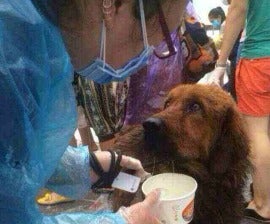-

Every hatchling counts. Bali Sea Turtle Society
-

Sea turtle lecture. APOWA
-

Students help with a beach clean-up. APOWA
-

The turtle patrol found a whale carcass. APOWA
-

Digging for a nest. Bali Sea Turtle Society
-

A release with the Regent. Bali Sea Turtle Society
-

Media attention for the cause. Bali Sea Turtle Society
-

Visiting kindergartners participated in a release. Bali Sea Turtle Society
-

Publicity via parade. Bali Sea Turtle Society
In Odisha, India, where HSI is involved in a sea turtle conservation project, community volunteers, turtle guards, forestry personnel and technical experts came together last month for a training program coordinated by our local partner organization, Action for Protection of Wild Animals.
The workshop, led by famous scientist Dr. Kartik Shankar, along with Dr. Chetan Rao of the Indian Institute of Science/Dakshin Foundation and Ms. Madhuri Ramesh of ATREE, Bangalore, covered:
- safe relocation of eggs from beach to hatchery
- hatchery management
- beach management
- humane handling of hatchlings
- care of injured turtles.
The aim was to to learn from each other’s experiences; the agenda included a review of lessons learned from the events of the past year, an introduction to the project and an explanation of its objectives and expected results.
Support our campaign to protect wildlife around the world.
Separately, we did a beach cleanup where 20 students, their teacher and headmistress joined APOWA volunteers to remove debris.
Sporadic nesting has already started, so the project team and community volunteers have been patrolling the beaches at night. From December 15 to January 15, in three locations, the team found 16 nests, 175 turtle carcasses and one whale carcass.
Bali conservation efforts
Meanwhile in Bali, Indonesia, HSI-Australia is supporting the Bali Sea Turtle Society to protect sea turtles and their habitat in that area of the world. From July-December 2014, this team rescued and released 23,833 hatchlings. July was the peak of the nesting season. Various nests were found by beach visitors, turtle rangers, police/security (including hotel security) and fishermen.
One nest was saved after a tourist reported it.
Another was preserved when the management of a villa, worried about the turtle’s safety, contacted BSTS for help. They arrived the same day and relocated the nest away from the path of motorcycles, ATVs and other dangers. The villa’s owners were very appreciative and promised to keep the eggs safe.
In a third instance, BSTS received a report that disoriented hatchlings were lost in a hotel swimming pool! BSTS, hotel management and guests gathered 35 baby turtles from this location and released them into the sea.
Sadly, four turtles were found dead, stranded by a monsoon.
Two groups of confiscated turtles—nine in one case and 41 in the other—were released; those who had taken them illegally were sent to trial.
Humane education is another facet of this project. BSTS gave a talk at a local high school and another at a university. They also conducted training for the staff of two resorts, one at the request of management after a nest was found on its grounds. Elementary school students helped with a beach cleanup. A kindergarten group visited the Sea Turtle Protection Centre; those children were fortunate to see hatchlings emerge while they were there.
The chairman of BSTS, Wayan Wiradnayana, was honored by the Centre for Orangutan Project with a Lifetime Achievement Award for his dedication to protecting sea turtles and for inspiring younger generations.
BSTS also promoted sea turtle conservation by doing community outreach. They participated in a village parade. They worked with ladies’ wear brand Surfergirl to promote sea turtle protection and put on an exhibit with a booth at a music festival. Finally, they printed a 2015 calendar and distributed it around the island. They received good media attention and much positive feedback from community members, hotel staff and management, and tourists for their efforts.
One precious hatchling at a time, we are working hard to help save these endangered species. Join us—become a Wildlife Defender.














